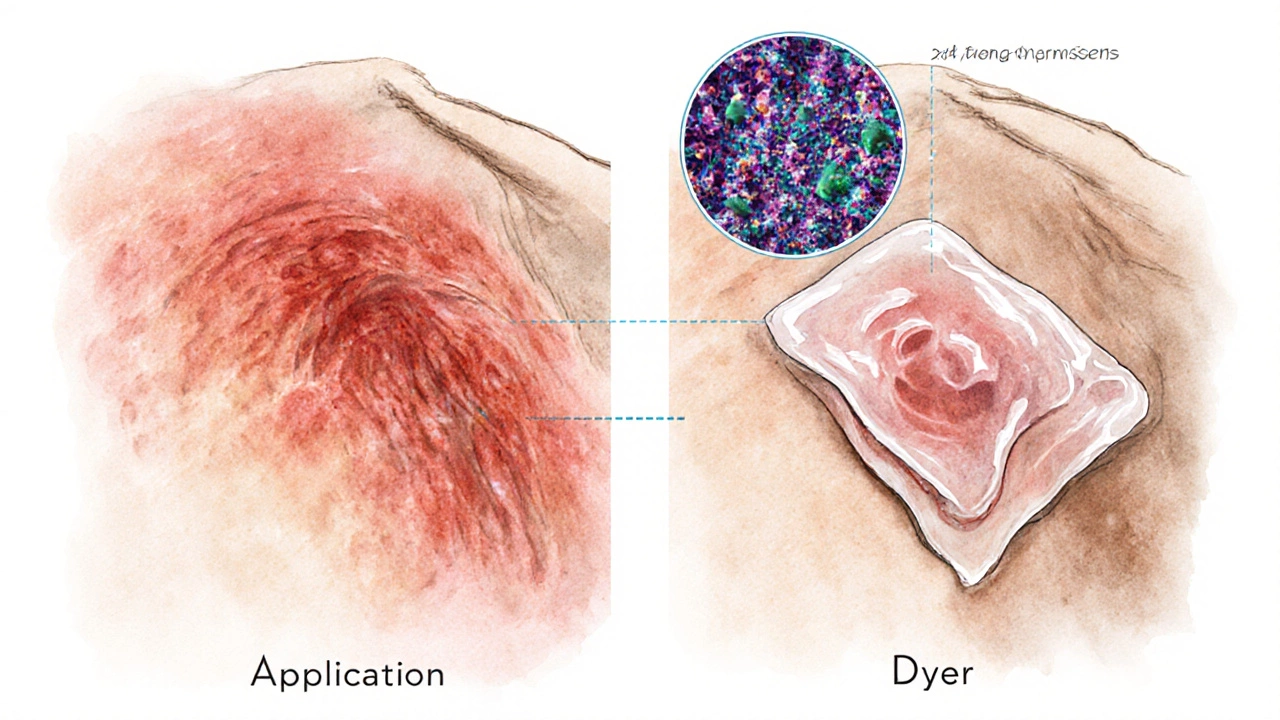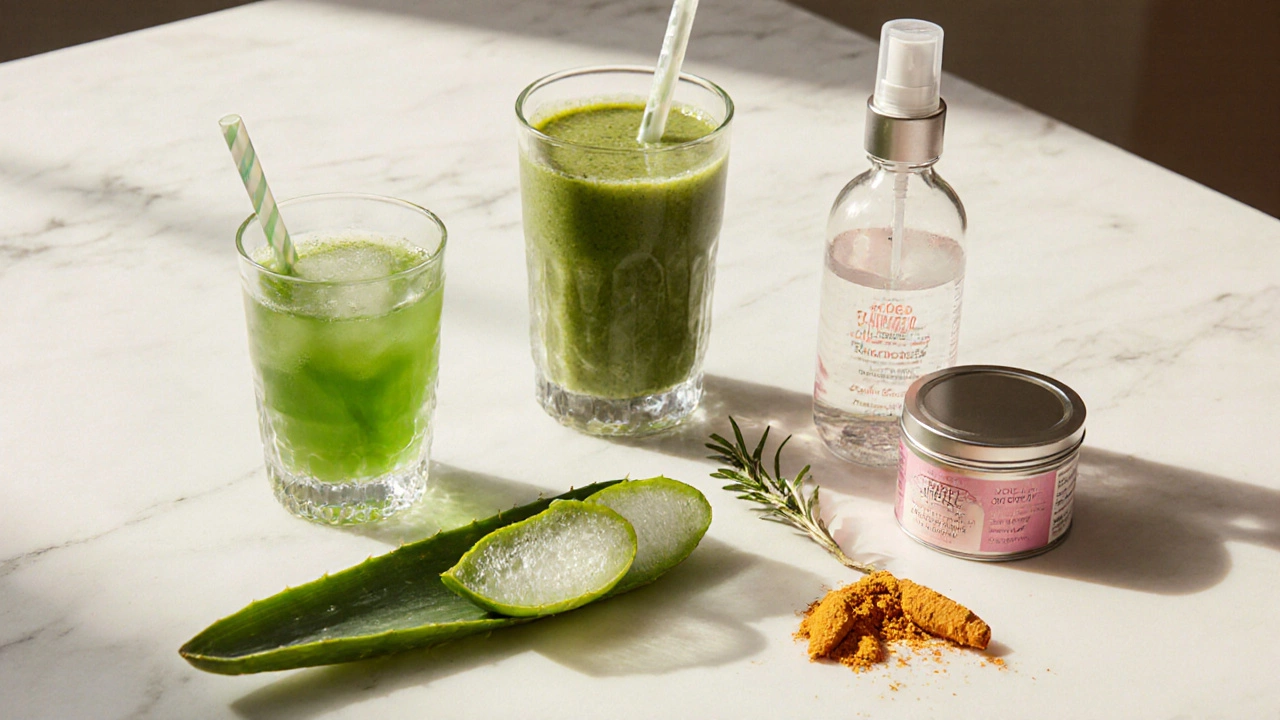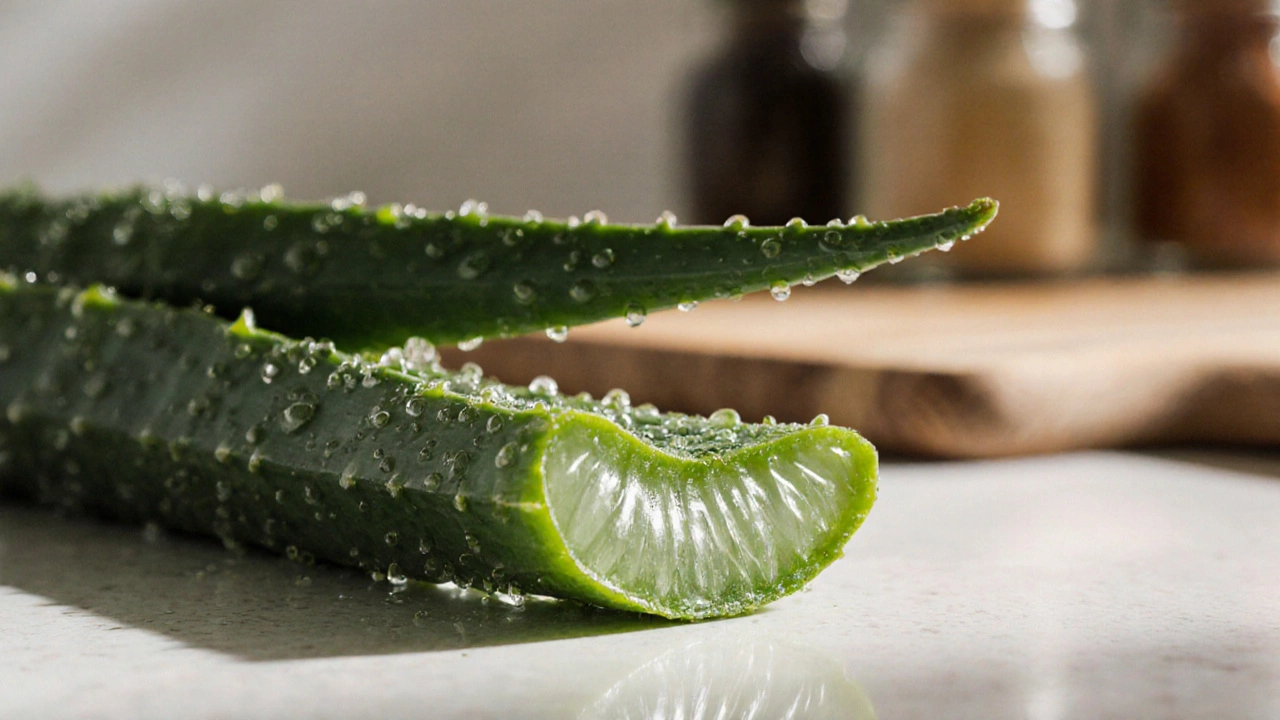Aloe Vera Benefits & Comparison Tool
About Aloe Vera
Aloe vera is a succulent plant known for its healing properties. It's widely used for skin care, digestive health, and inflammation relief.
Benefits for Selected Area
Comparison with Other Herbs
See how aloe vera compares to other popular herbs:
Ever heard someone claim there’s a plant that can cure every ailment? The buzz often points to a single green wonder that seems to appear in every kitchen shelf and bathroom cabinet. While no plant is a universal cure, one herb truly lives up to the hype in many ways - Aloe vera. Below we unpack what makes this succulent special, what science says, and how it stacks up against other legendary herbs.
Key Takeaways
- Aloe vera contains vitamins, minerals, and compounds that support skin, digestion, and inflammation control.
- Clinical trials back its effectiveness for burns, wound healing, and certain gastrointestinal issues.
- It’s safe for most people when used topically, but oral consumption requires quality checks.
- Other “miracle” herbs like Moringa, Tulsi, Neem, and Ashwagandha complement aloe’s benefits but differ in usage.
- Choosing pure, cold‑pressed aloe gel and storing it properly maximizes its potency.
What the “miracle plant” really is
Aloe vera is a succulent belonging to the Liliaceae family, native to the Arabian Peninsula but cultivated worldwide. Its thick, fleshy leaves store a clear gel rich in polysaccharides, vitamins A, C, E, and B‑complex, plus minerals like calcium, magnesium, and zinc. People have used it for centuries in traditional Indian (Ayurvedic) and Chinese medicine, dubbing it the "plant of immortality" because of its broad therapeutic reach.
Botanical profile and active ingredients
The gel’s star compound is acemannan, a mannose‑rich polysaccharide that stimulates fibroblast activity, essential for skin regeneration. anthraquinones such as aloin provide laxative effects, while flavonoids and phenolic acids contribute antioxidant power.

Healing properties backed by research
Recent peer‑reviewed studies (e.g., Journal of Ethnopharmacology, 2023) show aloe gel accelerates burn wound closure by 30% compared to standard dressings. Another double‑blind trial found that oral aloe latex reduced ulcer pain in 70% of participants after four weeks.
Beyond skin, aloe’s anti‑inflammatory cytokine modulation helps lower joint swelling, making it a supportive addition for mild arthritis. Its prebiotic fibers also nurture gut bacteria, improving digestion and occasional constipation.
Common everyday uses
- Topical soothing: Apply fresh gel to sunburns, minor cuts, or insect bites for instant cooling.
- Hair care: Mix gel with coconut oil as a leave‑in conditioner to reduce scalp irritation.
- Digestive aid: Drink a tablespoon of diluted aloe juice before meals to ease occasional heartburn (use de‑colored, low‑aloin varieties).
- Skin routine: Blend gel with honey for a hydrating mask that brightens dull skin.
Safety, side effects, and contraindications
Topical application is generally safe, but avoid eye contact. Oral intake can cause cramping or diarrhea if aloin levels are high; most commercial juices undergo de‑aloinization to mitigate this. Pregnant or nursing women should consult a doctor before consuming aloe, as it may stimulate uterine activity.

How to pick a quality aloe product
- Check the label for 100% pure aloe gel or cold‑pressed notation.
- Look for a short ingredient list - avoid added sugars, synthetic colors, or preservatives like parabens.
- Prefer products stored in opaque, airtight containers to protect the gel from UV degradation.
- Verify the aloin content is below 0.05% for oral products; this is the safety threshold set by most regulatory bodies.
Other legendary “cure‑all” herbs
While aloe shines in skin and digestive health, several other herbs earn the “miracle” label in their own niches. Below is a quick comparison.
| Herb | Primary Benefits | Scientific Support | Common Forms | Safety Note |
|---|---|---|---|---|
| Aloe vera | Skin regeneration, digestive soothing, anti‑inflammatory | Burn healing (30% faster), ulcer pain reduction | Gel, juice, cream | Low‑aloin juice safe; avoid excess oral intake |
| Moringa oleifera | Nutrient dense, blood sugar regulation, antioxidant | Meta‑analysis 2022 shows 15% HbA1c drop in diabetics | Powder, leaf tea | High doses may affect thyroid function |
| Holy Basil (Tulsi) | Stress relief, immune boost, respiratory support | Adaptogenic effects confirmed in 2021 clinical trial | Tea, tincture | May lower blood pressure - monitor if hypertensive |
| Neem (Azadirachta indica) | Antimicrobial, skin detox, blood purification | Topical neem oil effective against acne (70% improvement) | Oil, leaf capsules | Pregnant women should avoid high doses |
| Ashwagandha (Withania somnifera) | Stress reduction, muscle strength, hormone balance | Randomized trial 2020 shows 5% cortisol drop | Root powder, extract | Excessive use may cause gastrointestinal upset |
Practical tips for integrating aloe into daily life
- Keep a small aloe leaf in the fridge; slice and apply the gel directly to minor burns.
- Add a teaspoon of pure aloe juice to your morning smoothie for gentle gut support.
- Mix equal parts aloe gel and rose water to create a refreshing facial spray.
- Combine aloe gel with turmeric paste for a potent anti‑inflammatory mask (use a 1:1 ratio).
Frequently Asked Questions
Can aloe vera really cure all diseases?
No single plant can eliminate every illness. Aloe vera excels in skin repair, mild digestive relief, and inflammation control, but chronic conditions like cancer or heart disease still require conventional treatment.
Is it safe to drink aloe juice daily?
Yes, if you choose a low‑aloin, food‑grade juice and limit intake to 1‑2 ounces per day. Excessive consumption can lead to laxative effects or electrolyte imbalance.
How does aloe compare to Moringa for blood sugar control?
Moringa offers stronger glycemic regulation due to its high fiber and glucosinolate content. Aloe helps mainly by soothing the gut and reducing post‑meal spikes, making it a complementary rather than primary option.
Can I use aloe on open wounds?
Fresh gel can be applied to minor cuts and abrasions after cleaning. For deep or infected wounds, seek medical care first; aloe may assist healing but isn’t a substitute for proper wound management.
What’s the difference between aloe gel and aloe juice?
Gel is the thick, mostly water‑based inner leaf material used topically. Juice is the filtered liquid, often mixed with other fruit juices and may contain aloin unless processed out. Both have health benefits but serve different purposes.



